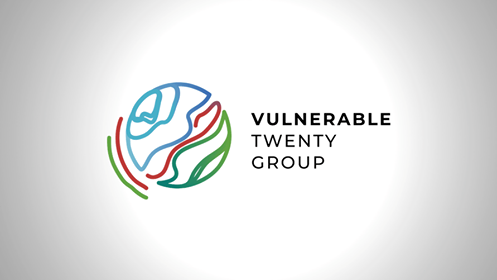Statement delivered by Ms. Alexia Latortue, Assistant Secretary for International Trade and Development of the Department of Treasury, United States
V20 MINISTERIAL DIALOGUE XII
16 April 2024
Washington D.C., USA
Ms. Alexia Latortue, Assistant Secretary for International Trade and Development of the Department of Treasury, United States
Thank you so much, Chair, and thank you for the opportunity to speak. I’d also like to acknowledge former President Mohamed Nasheed and former Finance Minister, Ken Ofori-Atta. It’s very good to be with all of you today.
It’s absolutely clear that we’re in a high stakes moment for sustainable development and nowhere are the stakes higher than for vulnerable countries. We believe that the test of whether the international financial architecture is working will be if it’s working for the countries around this table. I would like to reaffirm the United States and the Treasury Department’s unwavering commitment and resolution to work with you to help optimize and evolve the international financial architecture.
The vision we have for a system that works, unfortunately, is not realized today, and there’s a wide gap between our vision and where we are today. Dr. Mohieldin just referred to the speech that Under Secretary Jay Shambaugh gave last week, and several speakers have already cited the challenge of negative flows, the challenges of debt development, finance, and fiscal space.
I would like to share with you the vision that my Under Secretary shared in his speech in terms of what we need the system to look like, and he shared three facets of that vision. The first one is clarity that we need a pledge from official bilateral creditors to coordinate, to sustain positive financing flows to countries that are pursuing developments supported by the International Monetary Fund and by the Multilateral Development Banks. Official bilateral flows to lower income countries should include more direct budget support, grants, and concessional finance, more of that, not non-concessional loans in order to protect debt sustainability and free up public balance sheets.
Secondly, we need to see approaches for developing countries with significant external market debt that helps sustain private flows at affordable terms by better utilizing credit enhancements, guarantees, political risk insurance from the MDBs and development finance institutions, along with borrower protections.
Third, we need to see coordinated packages of support from the newly expanded or streamlined resources across the international financial institutions. Like for example, the Poverty Reduction and Growth Trust at the IMF, and the United States is pleased that we got authorization to now provide $21 million to this trust fund, but also the new capacity that we’ve seen across the development bank’s, $50 billion here at the World Bank, for example, $100 billion at the Asian Development Bank, and so on.
We heard from the Green Climate Fund better utilizing the concessional resources that existed across the multilateral climate funds, improving the ease to access to those funds, streamlining the policies and procedures across those funds.
We believe that this approach should be — of coordinated packages should be IFI-coordinated and country-owned and paired new resources with scaled up technical assistance on priorities like domestic resource mobilization that we — that President Nasheed spoke about. So I hope that you see in the United States an enthusiastic and energetic partner to help realize this vision.
Thank you, Chair.
[END]


